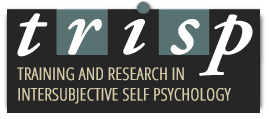In most forms of psychotherapy the therapeutic action has been tied to the provision of insight. In classical psychoanalysis it is interpretation in the service of resolving transference that is thought to be therapeutic. Even Kohut, when defining what is curative in self psychology, resorted to the tried and true, meaning the provision of insight. Self psychology cures, he argued, by providing interpretations of what he referred to as the disruption-repair cycle. Insight is offered in the form of “understanding explanations” of how the analyst’s misattunement has caused a disruption of the tie, what is revived for the patient from his/her past when this is felt to have occurred, and what protective maneuvers the patient engages in in order to shore up the self experience. In self psychology this interpretative work is in the service of restoring the selfobject transference bond.
We contend that while the interpretation of the disruption-repair cycle plays an essential role in the clinical process and captures therapeutic action of the work with the trailing edge, it does not address what, if anything, therapeutic is occurring when the tie is intact. If our interpretative efforts and therapeutic interventions are aimed at restoring the self-selfobject tie in the intersubjective matrix, it would suggest that something therapeutically significant is taking place when the tie is intact.
But what is that, and how do we think of it?
This topic, the therapeutic action of the leading edge, is one of the issues we seek to address in this workshop. In our conceptualization of the therapeutic action in intersubjective self psychology, the goal is not only to address what is occurring when we work to restore the tie that is disrupted but also to capture what therapeutic action is taking place when the tie is intact.
In the first half of the workshop I will develop these ideas and formulate a theoretical framework for what is curative in our work. In the second half, Laura D’Angelo will provide a fascinating case example that will illuminate our thinking on this subject and will let us all together explore this topic further.
We welcome you to join in on the discussion of what we aim for in our work as intersubjective self psychologists.
See you all on Friday November 13 at 6pm.
Posted by Peter Zimmermann

 Find Us on Facebook
Find Us on Facebook